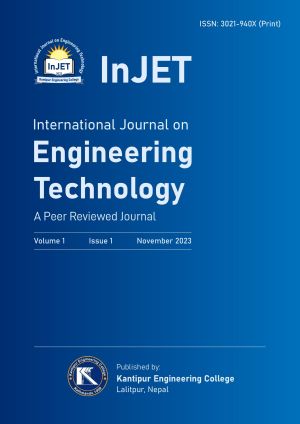Detection of Missing Component in PCB Using YOLO
DOI:
https://doi.org/10.3126/injet.v1i1.60902Keywords:
Printed circuit board, Inductor, Capacitors, Resistors, Data labeling, YOLO, Machine learning, Label Studio, Push Button, Automated optical inspection, Mean Average PrecisionAbstract
The detection of missing components in printed circuit boards (PCBs) is a critical task in the electronics manufacturing industry. The current practice of manual inspection is time-consuming and prone to human error, which can result in faulty products and increased costs. In this paper, we propose a solution that uses the YOLO (You Only Look Once) object detection algorithm to automatically detect missing electronic components in PCBs. Electronic components detection model is trained using YOLOv3 architecture. Dataset is prepared using high quality printed circuit board images and manual labeling in Label Studio. The model is trained on a dataset of 16 different electronic components commonly found in PCBs including Electrolytic Capacitor, QFP, Toroidal core Inductor, Crystal Oscillator etc. Prepared model recognizes these electronic components with an average map score of 65.8%with IoU 50% and 42.6% with IoU 95%. The results show that the proposed solution can detect the missing components.
Downloads
Downloads
Published
How to Cite
Issue
Section
License
This license enables reusers to distribute, remix, adapt, and build upon the material in any medium or format, so long as attribution is given to the creator. The license allows for commercial use.




